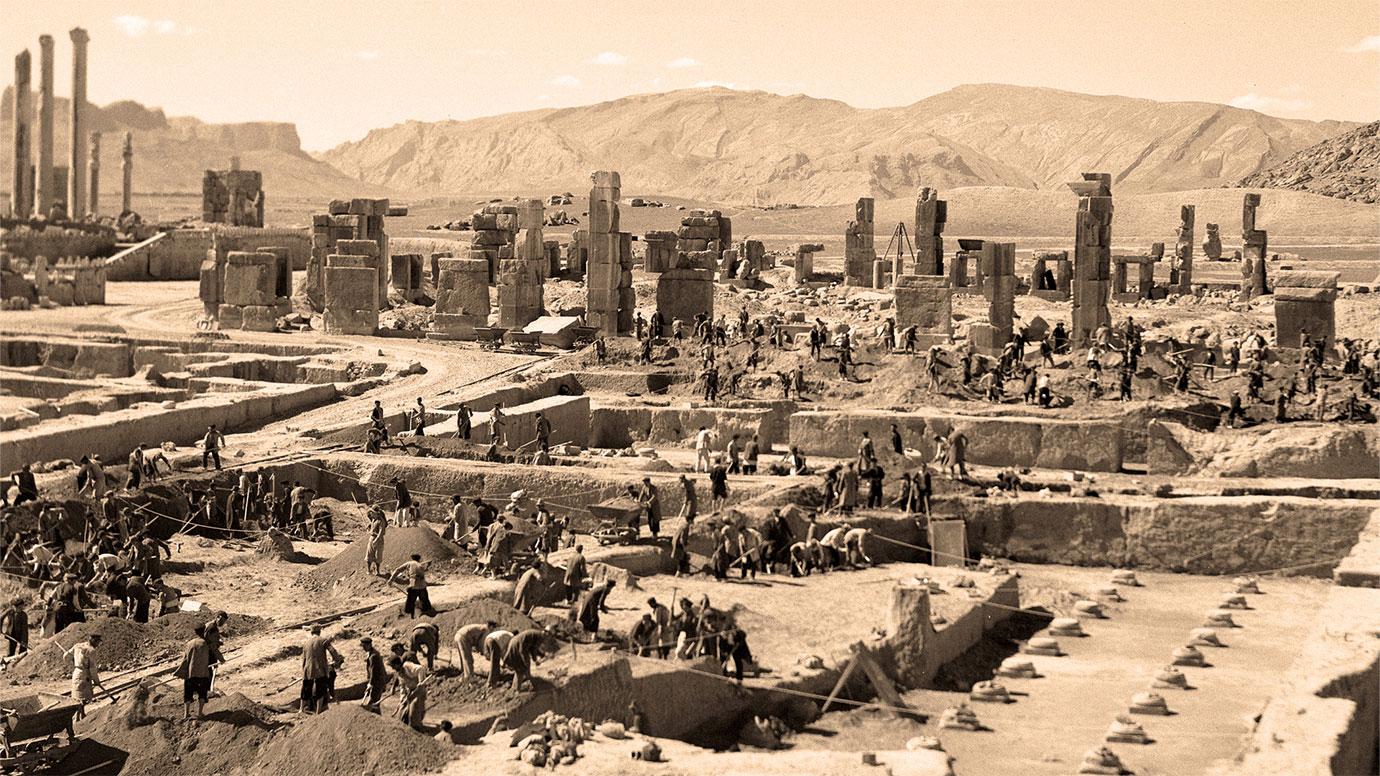
Other Civilizations
1.7 Iranian Civilisation
Ancient Iran, also known as Persia, is a historic region of southwestern Asia that is only roughly coterminous with modern Iran. The term Persia was used for centuries, chiefly in the West, to designate those regions where Persian language and culture predominated, but it more correctly refers to a region of southern Iran formerly known as Persis, alternatively as Pārs or Parsa, modern Fārs. Parsa was the name of an Indo-European nomadic people who migrated into the region about 1000 BC.
The first mention of Parsa occurs in the annals of Shalmaneser II, an Assyrian king, in 844 BC. During the rule of the Persian Achaemenid dynasty (559–330 BC), the ancient Greeks first encountered the inhabitants of Persis on the Iranian plateau, when the Achaemenids—natives of Persis—were expanding their political sphere. The Achaemenids were the dominant dynasty during Greek history until the time of Alexander the Great, and the use of the name Persia was gradually extended by the Greeks and other peoples to apply to the whole Iranian plateau. This tendency was reinforced with the rise of the Sāsānian dynasty, also native to Persis, whose culture dominated the Iranian plateau until the 7th century AD. The people of this area have traditionally referred to the region as Iran, “Land of the Aryans,” and in 1935 the government of Iran requested that the name Iran be used in lieu of Persia. The two terms, however, are often used interchangeably when referring to periods preceding the 20th century.
Important Link: https://www.youtube.com/watch?v=ujmke0KBMBM
The Persian Empire is the name given to a series of dynasties centred in modern-day Iran that spanned several centuries—from the sixth century B.C. to the twentieth century A.D. The first Persian Empire, founded by Cyrus the Great around 550 B.C., became one of the largest empires in history, stretching from Europe’s Balkan Peninsula in the West to India’s Indus Valley in the East. This Iron Age dynasty, sometimes called the Achaemenid Empire, was a global hub of culture, religion, science, art and technology for more than 200 years before it fell to the invading armies of Alexander the Great.
Cyrus the Great
The Persian Empire started as a collection of semi-nomadic tribes who raised sheep, goats and cattle on the Iranian plateau.
Cyrus the Great—the leader of one such tribe—began to defeat nearby kingdoms, including Media, Lydia and Babylon, joining them under one rule. He founded the first Persian Empire, also known as the Achaemenid Empire, in 550 B.C.
The first Persian Empire under Cyrus the Great soon became the world’s first superpower. It united under one government three important sites of early human civilization in the ancient world: Mesopotamia, Egypt’s Nile Valley and India’s Indus Valley.
Cyrus the Great is immortalised in the Cyrus Cylinder, a clay cylinder inscribed in 539 BC with the story of how he conquered Babylon from King Nabonidus, bringing an end to the Neo-Babylonian empire.
Darius the Great, the fourth king of the Achaemenid Empire, ruled over the Persian Empire when it was at its largest, stretching from The Caucasus and West Asia to what was then Macedonia (today’s Balkans), the Black Sea, Central Asia and even into Africa including parts of Libya and Egypt. He unified the empire through introducing standard currency and weights and measures; making Aramaic the official language and building roads.
The Behistun Inscription, a multilingual relief carved into Mount Behistun in Western Iran, extolled his virtues and was a critical key to deciphering cuneiform script. Its impact is compared to that of the Rosetta Stone, the tablet that enabled scholars to decipher Egyptian hieroglyphics.
At its height under Darius the Great, the Persian Empire stretched from Europe’s Balkan Peninsula—in parts of what is present day Bulgaria, Romania and Ukraine—to the Indus River Valley in northwest India and south to Egypt.
The Persians were the first people to establish regular routes of communication between three continents—Africa, Asia and Europe. They built many new roads and developed the world’s first postal service
Persian Culture
The ancient Persians of the Achaemenid Empire created art in many forms, including metalwork, rock carvings, weaving and architecture. As the Persian Empire expanded to encompass other artistic centres of early civilization, a new style was formed with influences from these sources.
Early Persian art included large, carved rock reliefs cut into cliffs, such as those found at Naqsh-e Rustam, an ancient cemetery filled with the tombs of Achaemenid kings. The elaborate rock murals depict equestrian scenes and battle victories.
For almost 30 centuries—from its unification around 3100 B.C. to its conquest by Alexander the Great in 332 B.C.—ancient Egypt was the preeminent civilization in the Mediterranean world. From the great pyramids of the Old Kingdom through the military conquests of the New Kingdom, Egypt’s majesty has long entranced archaeologists and historians and created a vibrant field of study all its own: Egyptology. The main sources of information about ancient Egypt are the many monuments, objects and artefacts that have been recovered from archaeological sites
